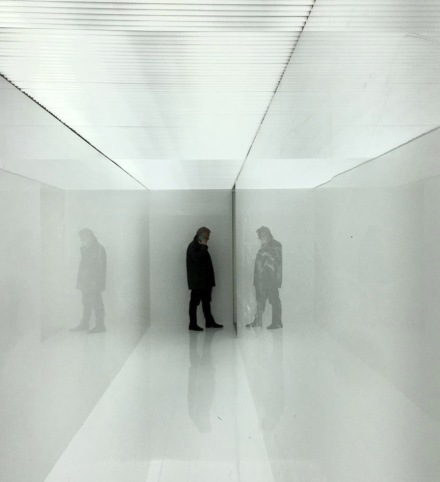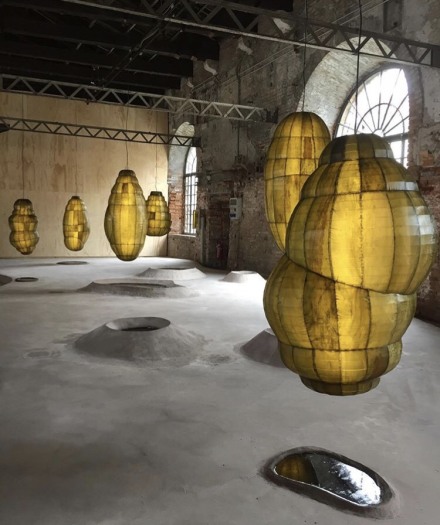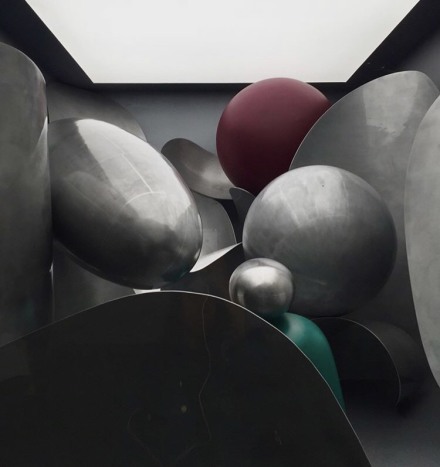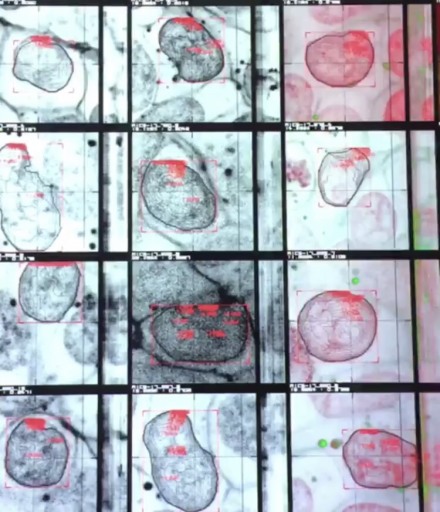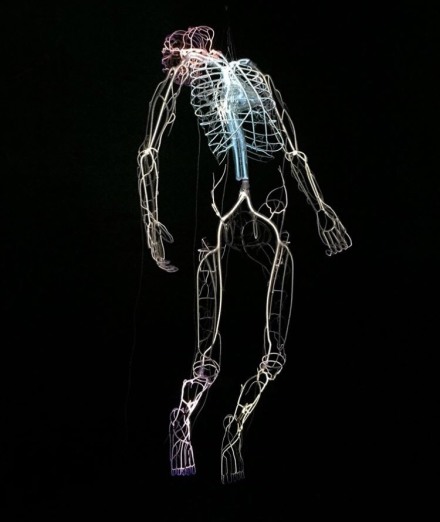
Tavares Strachan, via Art Observed
The wait is over, the previews are drawing to a close, and the Venice Biennale is preparing to open to the public this weekend, capping off a long few days of exhibitions and openings across the city. The main show, May You Live in Interesting Times, curated by Hayward Director Ralph Rugoff, is a sprawling, ambitious show that follows in the tradition of the exhibition’s expansive take on the state of the world, the state of art, and the language of modernity. Rugoff has taken this challenge up in impressive fashion, combining social awareness, technologically-progressive works and challenging thematics with great style and flair.
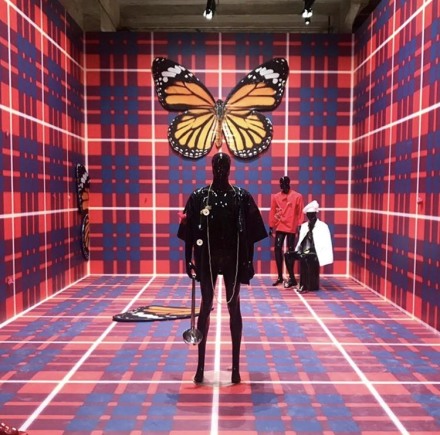
Anthea Hamilton, via Art Observed
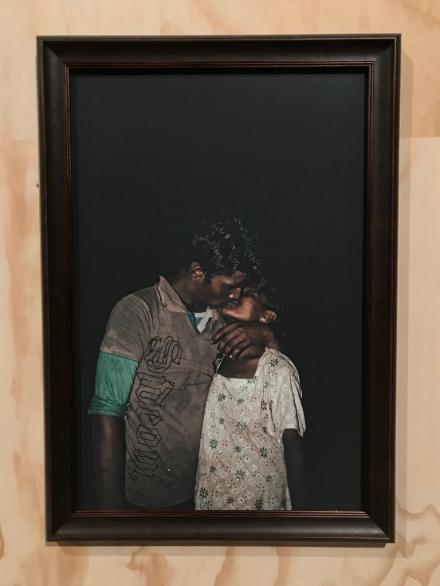
Soham Gupta, Untitled (2013-2017), via Art Observed
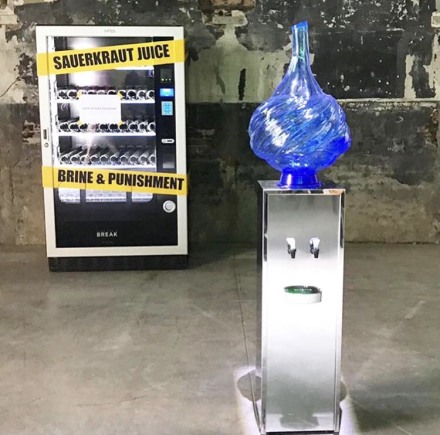
Slavs and Tatars, via Art Observed
In a moment in which our access to information seems to be growing ever narrower the exhibition exposes the social division of parallel societies and human beings from different sides of the globe through differing mediums and artistic practices exposing inequality, struggle, and violence in a common language that enables voices to be heard while providing an important key with which to approach the future. It opens with a large scale George Condo painting, Double Elvis, created in 2019 and depicting the iconic image earlier represented by Warhol with a new, ferocious energy, tying its historical antecedent, and the implications of a more stable global order, to a turbulent, confusing present. It continues with a series of photographs by Soham Gupta from the artist’s series Angst. These images, representing inhabitants living on the outskirts of Kolkata, brings out stories of sexual abuse, domestic violence and violation that, through a potent expressivity, approaches a sense of auto-reflectivity and closeness to the viewer.
More social issues are tackled by Christian Marclay’s 48 War Movies, a single channel video . installation. The artist uses images, and filmic fragments from a range of war films, cut and pasted together to create a disorienting, kaleidoscopic effect that twists the viewer’s sense of space and time. Histories of violence, and its subsequent glorification by Hollywood are put under the microscope, criticizing the rearranging of cultural values to present a more willing attitude towards war and violence. The video’s changing nature and shifting arrangements make for an almost endless stream of images, superimposing its constructs and removing the aura of war imagery, leaving only the overwhelming sense of disruption and trauma it leaves in its wake.
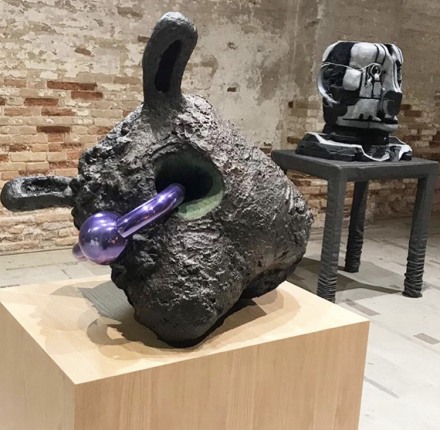
Nicole Eisenmann, via Art Observed
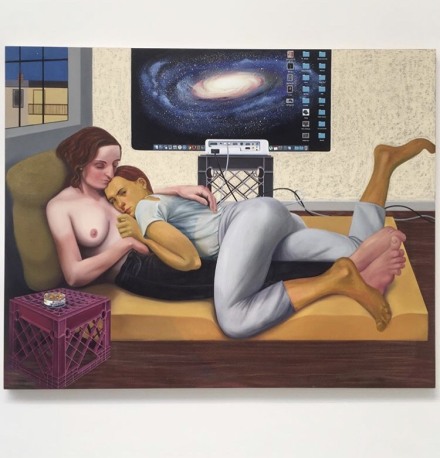
Nicole Eisenmann, via Art Observed
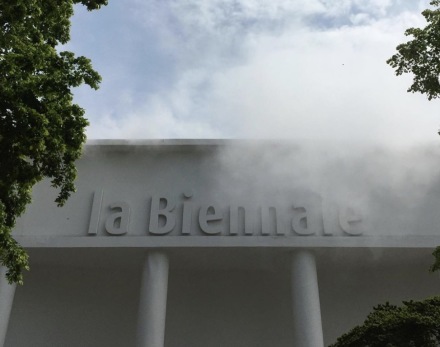
Mist Over Venice by Lara Favaretto, via Art Observed
In another corner, artist Tavares Strachan brings back to life the story of Robert Henry Lawrence Jr., a black astronaut that died while training another member of staff, having been accidentally cast out of his cockpit. Lawrence Jr. was anticipated to become the first black astronaut in space, but it was 11 years before another African American was chosen to undergo astronaut training. The artist’s work, suspending a glowing body in mid-air, and a neon text referring to the event, dwells into issues related to our system of knowledge, exposing misrepresentation of truth and visibility. In collaboration with Space X, the artist started to carry out some research about the first African American astronaut in space and exposed the incident to the general public. The neon installation represents the fluctuating skeleton of Lawrence forever suspended in space.
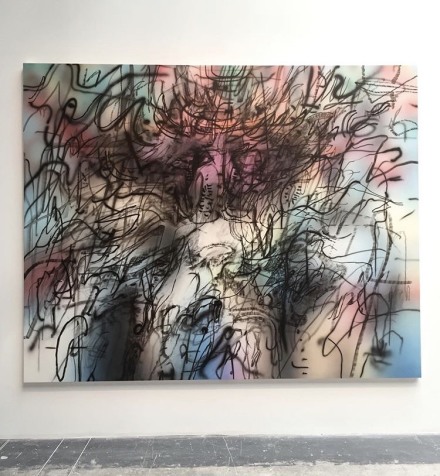
Julie Mehretu, via Art Observed
Artist Lee Bul takes a different tack on technology and identity. Her work, Aubade V is a steel and led sculpture based on the artist’s conception of a utopian space. The artist, daughter of left wing activists during South Korea’s military dictatorship experienced the effects of a repressive regime, and collects debris from the border between North and South Korea as a way of bringing divided realities together, all within a space where one would be able to survive a catastrophic climate upheaval.
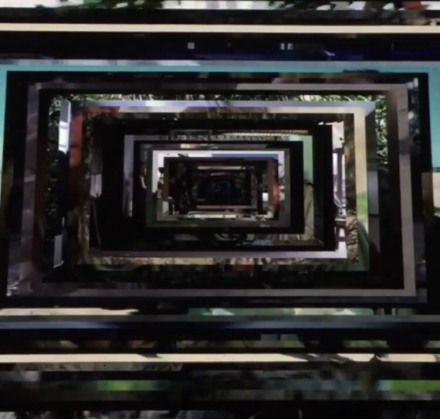
Christan Marclay, via Art Observed

Julie Mehretu, via Art Observed
Other artists have installed similarly ambitious worlds, each differing in scope and social framing. Haris Epaminonda Vol XXVII is a mixed-media metaphysical installation. Working with ceramics, words and sculpture, the artist traps the viewer in a series of historical meanings that exert their power and delicately invite the viewer to reflect on ancient systems of thought, ultimately arriving at a deeper awareness of time and history. Suspending pillars and color schemes that recall historical touchstones and schools of thought, Epaminonda’s work brings up striking conversations around points of origin and how varying world views might function in tandem. Elsewhere, artist Anthea Hamilton had reprised her work from The New Life, a solo show at Vienna Secession, to explore architecture, the representation of bodies, and the cultures that suspend them.
By contrast, artist Shilpa Gupta’s sound installation For You, In your tongue, I cannot fit, a work that addresses the violence of censorship through a symphony of registered voices that speak the verses of poems of 100 poets and movers that were imprisoned for their work. These include: “do you have a message for the blowing winds? To be delivered to far places…?” By Ahmad Jaiad, detained from 1923,1937 or “Firm like the Himalayas, we never bowed down” by Go Parasad Rimal, detained in 1940. The installation features 100 microphones suspended from the ceiling across the room, as well. The words are spoken and sung in multiple languages and the texts are printed on paper to be read, suggesting a proposal for bringing these voices together into the universality of human nature.
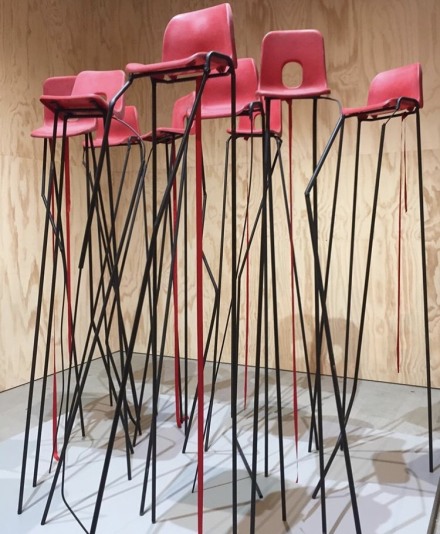
Jesse Darling, Liu Wei, via Art Observed
Also invested in the politics and history of struggle, Teresa Margolles examines, from a feminist perspective, the brutality of narco violence that afflicts Mexico. The work, titled The Search is an intervention with sound frequency that reproduces the sound of a train crossing the city. The works on view, panels covered with images of women disappeared in the city, vibrate at the sound of the passing train, turning the city into a theatre of femicide in the city, and pressing the viewer to reflect on individual power.
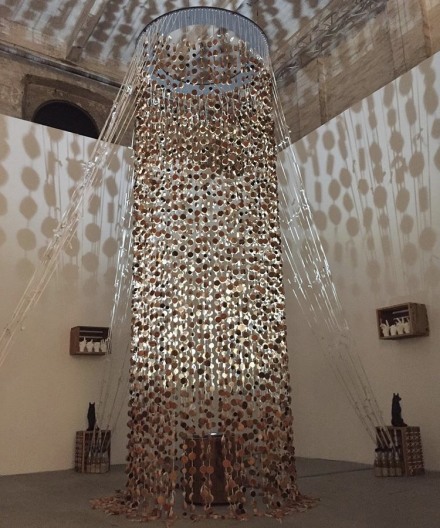
Kemang WaLehulere, via Art Observed
By contrast, the show also features ample video exploring otherworldly environs and concepts. Jon Rafman invites the viewer to reflect on the future of the world through an ironic portrayal of modern life in bizarrely mesmerizing form, a continuation of his Dream Journal series. He portrays a virtual urban space, dark and technological, populated by peculiar hybrid creatures combined with descriptions of lucid dreams and automatic writing. The universe he created extends into the space around the viewer, inviting a reflection on notions of what constitutes reality. Similarly, Ed Atkins’s video works create a bizarre juxtaposition of forms and movements, further pushing the sense of the absurd and otherworldly in exchange with the real-world crises around us.
This sense of juxtaposition and slippage is perhaps what gives the show its most potent charge, a selection of works drawing on the tensions of the modern world, and exploring ways to both live in, work with, and maneuver around its most poignant challenges. The show gives art a function which is both that of generating critical insight and providing aesthetic pleasure to the viewers, all centered around the artist’s ability to turn our view of the world on its head, or create a new one entirely.
The exhibition is open through November 24th.
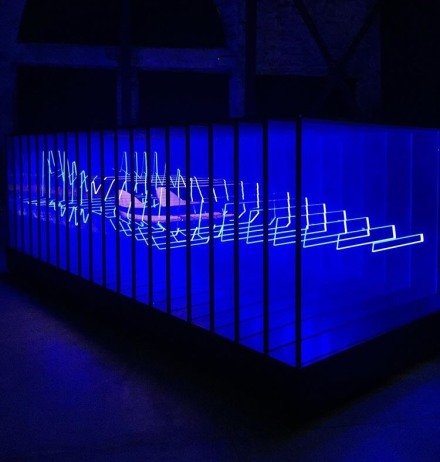
Marko Peljhan, Liu Wei, via Art Observed
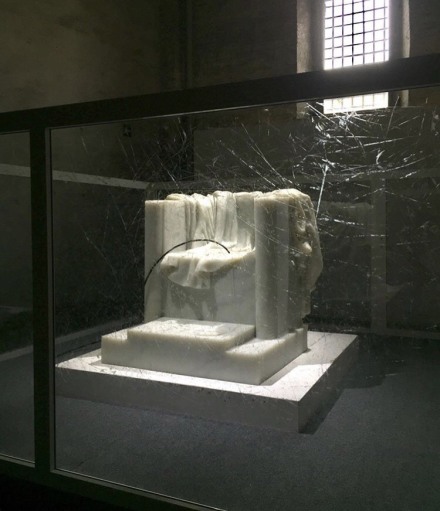
Suan Yuan and Peng Yu, via Art Observed
— D. Fenicia and D. Creahan
Read More:
Venice Biennale [Exhibition Site]




